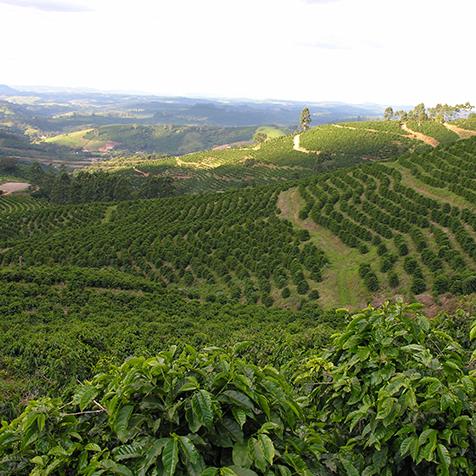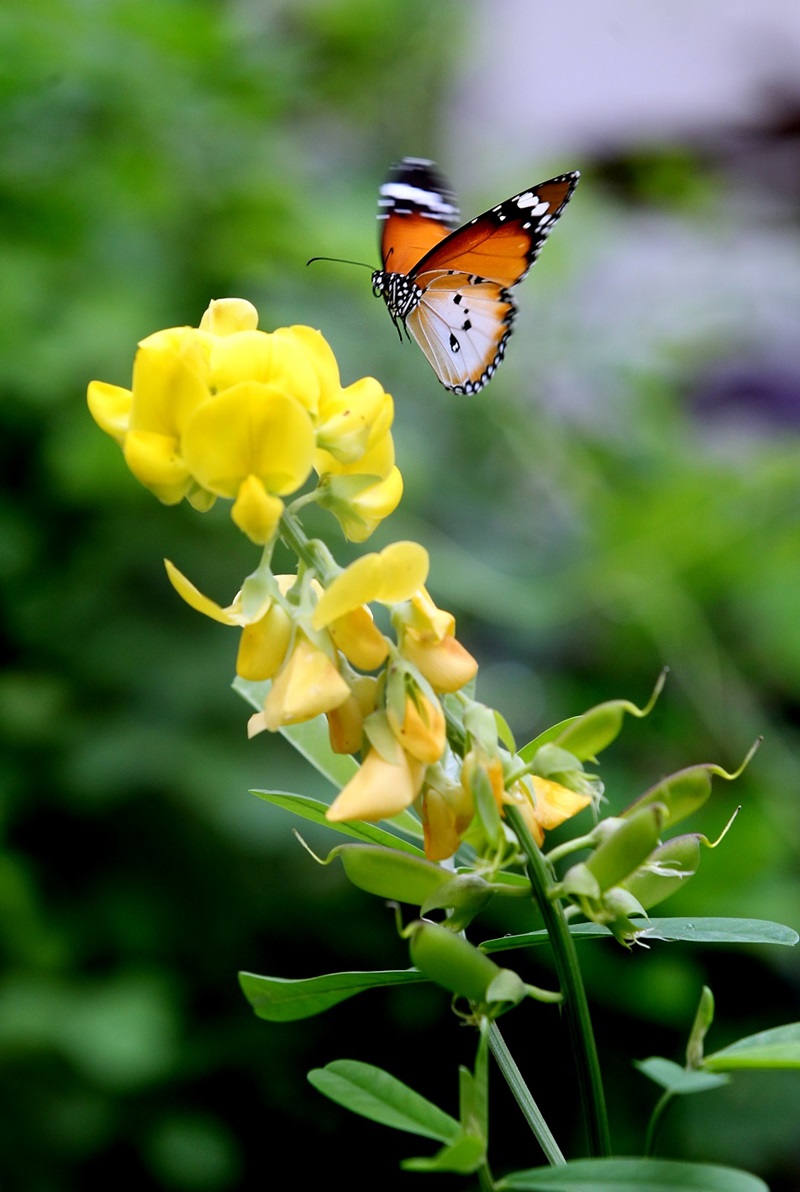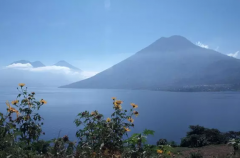Guatemala Coffee introduction Guava Manor washed SL28 Coffee Flavor
Guatemalan coffee, maybe we are not so strange to it. Guatemalan coffee, which once enjoyed the reputation of the best quality coffee in the world, has few places in the world that can provide a variety of high-quality coffee beans like those produced in Guatemala. The extra-hard coffee beans here are full-grained, delicious and balanced, and the coffee made with them is pure and rich. The excellent quality of Guatemalan coffee beans is due to the unique conditions of their origin.
The Republic of Guatemala (Spanish: Rep ú blica de Guatemala), translated as Guatemala, is a country of Central America, located in the south of the North American continent. It borders the Pacific Ocean to the west, the Caribbean Sea to the east, Mexico to the north, Belize to the northeast, and Honduras and El Salvador to the southeast. Guatemala produces about 3.5 million bags of coffee each year, and raw coffee beans account for 40 per cent of the country's total agricultural exports. This country, which mainly grows and exports coffee, has fertile soil suitable for coffee trees, suitable climate, abundant water resources and high altitude planting height. There are also many well-known producing areas in its territory, such as Antigua, Vivette Nanguo, Koban, Alcatel Nanguo, Attland, New Oriental, St. Marks and so on. Vivette Nango and Antigua are best known to coffee lovers.
Located in the tropics, there are many volcanoes in the territory, the northern and eastern coastal plains have a tropical rain forest climate, and the southern mountains have a subtropical climate. The year is divided into two dry and wet seasons, with the wet season from May to October and the dry season from November to April of the following year. The annual precipitation is 2000-3000 mm in the northeast and 500-1000 mm in the south. The forest accounts for half of the country's area and is the location of the best latitude for coffee production. Because coffee is an important cash crop in the area, it has given rise to a rich coffee culture. People drink coffee every day. Most people have a cup of coffee for lunch.
Like Costa Rica, El Salvador, Mexico, Honduras and other Central American countries, Guatemala's classification is based on altitude. Coffee produced at high altitudes is generally of higher quality than at lower altitudes, because the higher the altitude, the lower the temperature. At high elevations, the slower the coffee grows, the more beneficial it will be to the accumulation of good substances. That's why there is a way to classify quality by altitude. So what is the grading method based on altitude? In Guatemala, for example, the higher the altitude, the higher the density of coffee beans and the higher the grade of raw coffee beans:

The highest grade is SHB very hard beans, which are grown above 1350m above sea level.
The second is HB hard bean, which is planted at 1200m~1400m altitude.
There are also SH slightly hard beans, which are planted at an altitude of 1200m.
Coffee was really introduced into Guatemala in 1750 by Father Jesuit, where the coffee industry was developed by German colonists at the end of the 19th century. Today, most of the coffee industry's production takes place in the south of the country. Guatemala has seven main coffee producing areas: Antigua (Antigua), Cobain (Coban), Lake Attilan (Atitlan), Vevetnango (Huehuetenango), Farahan Plateau (Fraijanes), Oriente (Oliente) and San Marco (San Mareos).
The Antigua Valley (Antigua Valley) is the oldest and best-known coffee producing area in Guatemala. Volcanoes and extremely shallow groundwater levels form a dry microclimate, characterized by low humidity, adequate sunshine and cool nights. The extremely high content of pumice (pumice) in the soil of Antigua (from the active Fuaigo volcano Fuego) keeps the humidity stable at 65% all the year round, which is very different from other volcanic coffee producing areas, where the humidity usually varies greatly between the dry and wet seasons. Fertile volcanic soil, low humidity, plenty of sunshine and cool nights all make Antigua unique.
Antigua coffee is produced in Camana Manor, where the best quality coffee is ELPulcal, which is not only of good quality, but also, when compared with other Latin American coffees, this coffee is quite complete, rich and astonishing, and you will find it unexpected if you enjoy it with chocolate. The most important thing is that it has a very rich taste, a richer taste, and it has a fascinating taste of tobacco.
Vivette Nanguo is an important coffee producing area in Guatemala. Unlike Antigua, Vivette Nanguo has more aromatic, clear fruit flavor (fruity flavors) and refreshing flavor. Due to the high altitude, the coffee beans are of better quality, rich taste and full grains, which are favored by the European royal family. Guatemala is a coffee bean familiar to the Japanese. The classification is divided into seven grades according to the elevation. Coffee beans produced in highlands (SHB / 4500 feet above) are more mellow, while coffee beans produced in lowlands are of lower quality.
Vivette Nan Fruit is located in the highlands of northwestern Guatemala, growing at an altitude of 1800-2100 meters. It is the highest coffee-producing area in the country and is famous for producing high-quality beans. Due to the large number of rivers and lakes in Guatemala, the Vivette Nanguo region is rich in mountains and water resources, dry climate but abundant water resources, and complete water conservancy facilities in the region, coffee is mostly washed and processed. Vivette Nanguo coffee, rich taste, with a high mellow thickness, smoky taste is its most distinctive flavor.
The unique geographical conditions of the Farahan Plateau-volcanic soil, high altitude, humid and rainy climate, active volcanic activity. The Pacaya volcano in the region is the most active of the three still erupting volcanoes in Guatemala, leaving the Farahan Plateau often shrouded in a thin layer of dust and providing plenty of minerals for the soil of the Farahan Plateau. The dry period of coffee beans is the sunny season on the Farahan Plateau. Although it is often cloudy and foggy in the early morning, it will dissipate quickly, ensuring sun conditions in the area.
Coffee cultivation at La Tisha Manor on the Farahan Plateau began in 1920. The estate is planted with bourbon species, Kaddura, Pacamara, etc., with a variety of varieties. Of the 205acres (4046.8 square meters per acre) of the farm, 173acres are used to grow coffee. Another 32 acres of native forest is home to a variety of local wild species. There are several natural springs on the farm that provide adequate and high-quality irrigation for coffee plantations during the dry season, and they are also the power source for coffee processing plants (water for water treatment).
The name New Oriental is located in the easternmost part of Guatemala. Unlike Antigua, which is less than an hour's drive from the capital, New Oriental has to drive straight to the easternmost border with Honduras. Plan del Guayabo is located next to the Volc á n de Sucht á n volcano, which means "guava plain" in Spanish. It is named because of the large number of guava trees planted locally. The estate is owned by Benjamin Donado (Mr. Benjam í n Donado). The Donado family has been engaged in coffee production since 1990 and has been producing coffee for more than 20 years. Last year, a small amount of washed SL28 was produced in the guava plain, but this year, in cooperation with traders, new batches of sun-dried wine with unique flavor have been added. When cooperating with traders in this series, we have also communicated on the spot about the harvest standards and sun treatment methods (such as turning and drying days). From the results, it can be said to be a very happy harvest. In particular, SL28 is still a rare variety in Central America.
SL28, which originated from Lake Tanganyika in East Africa, was discovered in 1931. It has broad and reddish leaves, can adapt to high altitude environment, and has excellent drought and disease resistance. Its yield is higher than that of traditional tree species, and its flavor is unique. Wine sun flavor: pineapple, cantaloupe, dried apricot, sugared lemon peel, Bordeaux wine, green tea and cinnamon spices, full of sweetness and smoked plum aromas.

Each region has its own climate change, so the coffee beans in each region have their own characteristics, but to sum up, Guatemalan coffee has a mild and mellow overall texture and elegant aroma. and with similar hot and pleasant acidity such as fruit acid, it has become the aristocrat of coffee.
Important Notice :
前街咖啡 FrontStreet Coffee has moved to new addredd:
FrontStreet Coffee Address: 315,Donghua East Road,GuangZhou
Tel:020 38364473
- Prev

Introduction to the flavor characteristics of sun-cured coffee beans in Hartmann Coffee Manor, Panama
Producing area: Walken Variety: Kaddura treatment: sun planting altitude: 1300-1800 m Hartman Manor is run by the Hartman family (Familia Hartmann). The ancestor of his family, Alois Strasil Hartmann, was born in the then Austro-Hungarian Empire (that is, the present-day Czech Republic). Later, due to the outbreak of World War I and the instability of the country, he was forced to go out of the country.
- Next

Sumatra manning coffee bean name source story which tastes better between manning coffee and espresso
The history of coffee cultivation in Sumatra began in the 18th century, and the origin of the name Mantenin itself is very ethnic. Some people say that the bitter taste of Manning coffee is like the taste of lovelorn, because its bitterness does not upset people, and its fragrance can make people forget the bitterness of their hearts and stay awake. Taste
Related
- Does Rose Summer choose Blue, Green or Red? Detailed explanation of Rose Summer Coffee plots and Classification in Panamanian Jade Manor
- What is the difference between the origin, producing area, processing plant, cooperative and manor of coffee beans?
- How fine does the espresso powder fit? how to grind the espresso?
- Sca coffee roasting degree color card coffee roasting degree 8 roasting color values what do you mean?
- The practice of lattes: how to make lattes at home
- Introduction to Indonesian Fine Coffee beans-- Java Coffee producing area of Indonesian Arabica Coffee
- How much will the flavor of light and medium roasted rose summer be expressed? What baking level is rose summer suitable for?
- Introduction to the characteristics of washing, sun-drying or wet-planing coffee commonly used in Mantenin, Indonesia
- Price characteristics of Arabica Coffee Bean Starbucks introduction to Manning Coffee Bean Taste producing area Variety Manor
- What is the authentic Yega flavor? What are the flavor characteristics of the really excellent Yejasuffi coffee beans?

